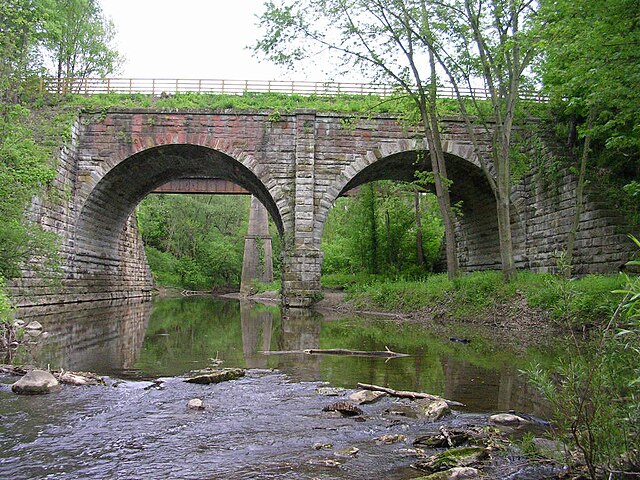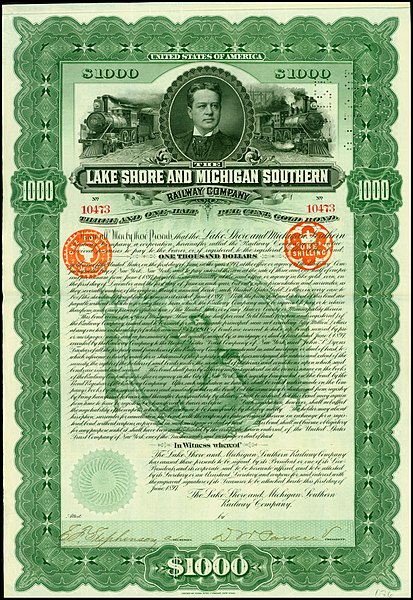Lake Shore and Michigan Southern Railway
The Lake Shore and Michigan Southern Railway, established in 1833, and sometimes referred to as the Lake Shore, was a major part of the New York Central Railroad's Water Level Route from Buffalo, New York, to Chicago, Illinois, primarily along the south shore of Lake Erie and across northern Indiana. The line's trackage remains a major rail transportation corridor used by Amtrak passenger trains and several freight lines; in 1998, its ownership was split at Cleveland, Ohio, between CSX Transportation to the east and Norfolk Southern Railway in the west.
Part of the original route, now in Sylvania, Ohio
Drawing of the Erie and Kalamazoo Railroad
LSMS double arch bridge over the East Branch of the Huron River, just west of Norwalk, Ohio. A similar, but smaller-sized bridge, exists to the east in the Ohio town of Wakeman.
Gold Bond of the Lake Shore and Michigan Southern Railway Company, issued 1 June 1897.
New York Central Railroad
The New York Central Railroad was a railroad primarily operating in the Great Lakes and Mid-Atlantic regions of the United States. The railroad primarily connected greater New York and Boston in the east with Chicago and St. Louis in the Midwest, along with the intermediate cities of Albany, Buffalo, Cleveland, Cincinnati, Detroit, Rochester and Syracuse. New York Central was headquartered in New York City's New York Central Building, adjacent to its largest station, Grand Central Terminal.
The main concourse of Grand Central Terminal in New York City
The former headquarters of the New York Central Railroad on Park Avenue, known today as the Helmsley Building
Bond of the New York Central Railroad Company, issued August 1, 1853 and signed by Erastus Corning
A New York Central Railroad train on the High Line through the Bell Laboratories Building in 1936








